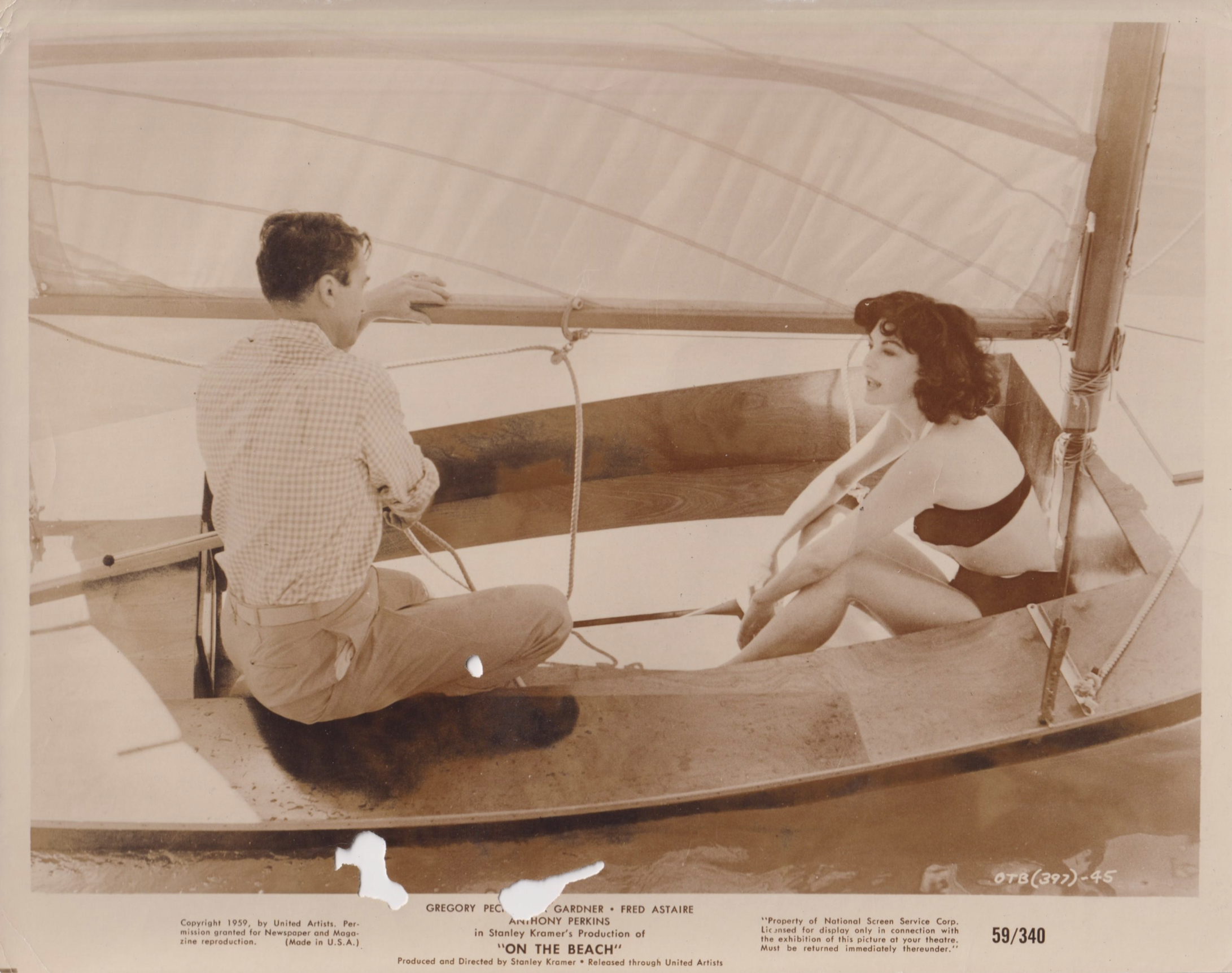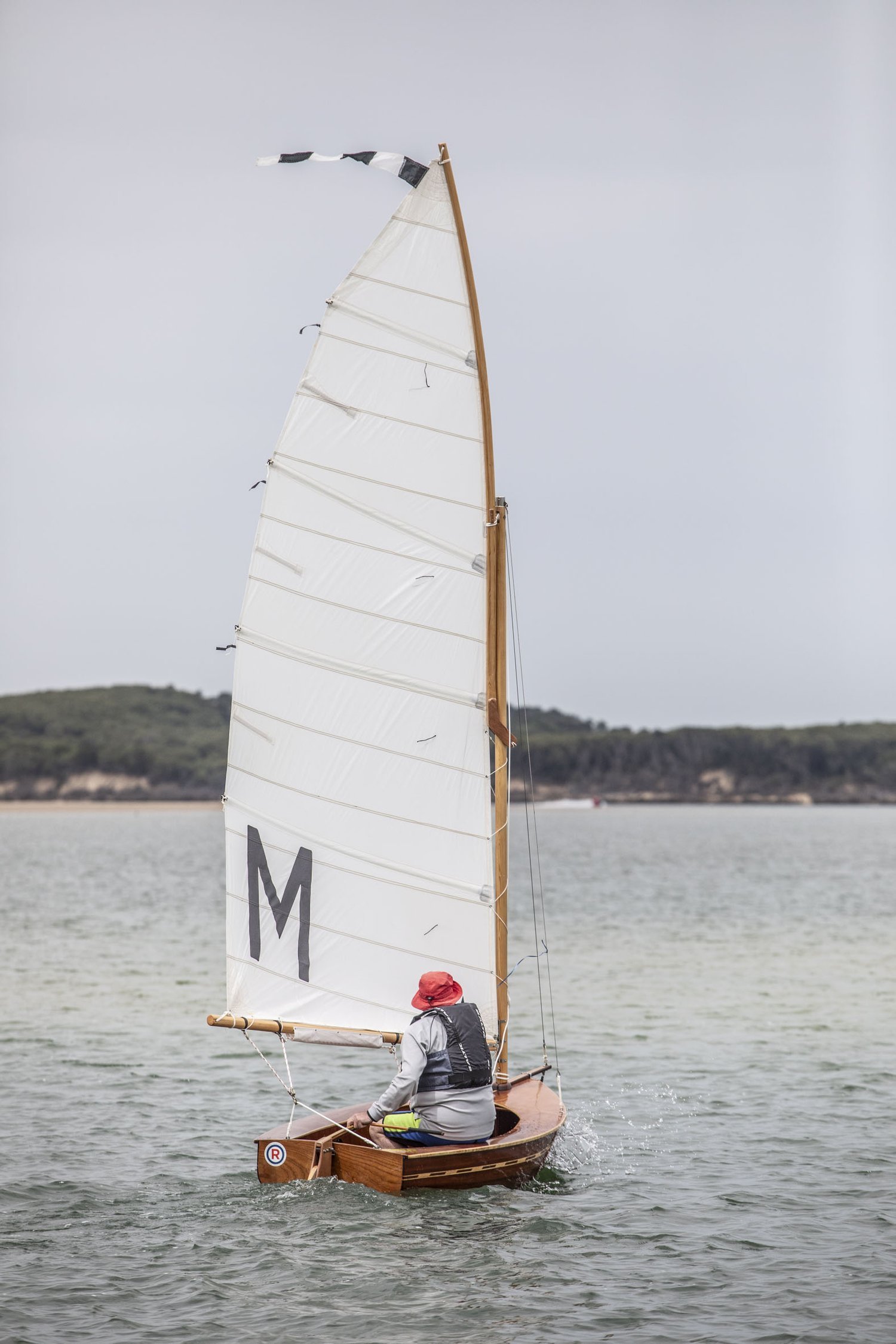Getting so much Right! Inverloch Classic Dinghies
With the plethora of traditional boating events on this summer, there’s a lot to be learned about what works and what doesn’t…. and most importantly… why. By many (but not all) metrics the wooden boat world is flourishing. The Australian Wooden Boat Festival in Hobart had its most successful event in 2023, heavily oversubscribed for boats afloat. it included an impressive display of classic dinghies under the barrel arch of Hobart City Hall. The Paynesville Classic Boat Rally scheduled for next weekend has over 150 boats already registered on its website and by all reports, they are destined for a great event. And over 8000 people read this humble publication each month so there is obviously an interest out there.
Last weekend I made the two hour drive down from Melbourne to the Victorian coastal town of Inverloch, to soak up the atmosphere at the Classic Wooden Dinghy Regatta.
For those of you who don’t know Inverloch, its a picturesque little holiday town in South Gippsland, with a shallow inlet, strong tides and sandbars. The bar is treacherous and only braved by small fishing boats and surfers and there is no access for keelboats. Situated on Anderson’s inlet, the South Gippsland Yacht Club, is an archetypal community organisation, run enthusiastically by and for the local members. The collection of club buildings could be described as having a “functional beach shack” vibe, catering to Off the Beach sailors in a characterful rather than luxurious way. (click to enlarge)
Here’s the official wrap up from Simon Wilson, the driving force behind the weekend.
Sailors and spectators alike were treated to a weekend of superb weather and light to moderate winds for the 10th year of the Inverloch Classic Wooden Boat Regatta. South Gippsland Yacht Club once again played host to this celebration of off-the-beach timber sailing boats on Anderson Inlet. Some 40 plus boats took to the water over the 2 days including racing dinghies, clinker built skerries, a Polish designed Salmo Lugger, a newly built Huon pine Percy Clinker and a veritable fleet of 11 Australian Sailfish.
Racing was close with a Sailfish, a Pacer and the Lugger each coming first on handicap over 4 races and representing the 3 starting divisions. The Regatta “Ginn Cup” was won by Shaun Ritson in his timber Pacer. Overall winner of the “Jack Carroll Memorial” Sailfish race Trophy was Jim French.
On shore, “Jack’s Toy” owned by Brian Carroll, Jack's son, won the Best Presented Sailfish Trophy. Judged Best in Show and the overall People’s Choice was "Allie" the Huon pine 'Percy Clinker' built by Anthony Horgan at the Wooden Boat Centre, Tasmania.
This is what I think the team of organisers got right.
It’s INCLUSIVE not EXCLUSIVE!
If you have a classic dinghy (by the broadest of definitions) you are welcome and you are supported. Some of the boats are spectacular and some them look like they have been dragged off the rafters in the garage for the first time in forty years. Age is no barrier at either end of the spectrum. In fact for some reason there seems to be a correlation between age and the degree of agility required to sail some of the craft!
It’s taken SERIOUSLY!
Somehow the team at the SGYC have managed to strike that perfect balance between, competition and enjoyment. The series of races is well conducted, with a thoughtful handicapping system, and an informal briefing that gives all the infomation that you need to know and none that you don’t. Everyone is trying hard but there’s not a lot of shouting and everyone is smiling at the end. The results are published and the winners are proud, but it’s not the focus.
There is an acknowledged respect for HISTORY!
Much of the conversation on the beach prior to the launch of the boats was about the history and development of the various classes. People are sailing these boats with the memories and achievements of their former custodians “on board”, acknowledging the past with respect. But importantly this respect is never allowed to interfere with getting out on the water.
Let’s finish with a bit of background on a Few classes that were represented at Inverloch, assisted by information sheets provided by the boats.
THE GWEN 12
This 12ft dinghy was designed in 1946 by Charlie Cunningham, who with his son Lindsay gained fame as the designers of popular catamarans like the Yvonne and Quickcat. The prototype Gwenda, was built of 3/4 inch ply, had an open cockpit with empty kerosine tins for bouyancy and much smaller sails than later boats. It also had no bowsprit and no trapeze, unlike the two boats sailing at Inverloch last weekend.
Albert Sailing Club was the first to adopt the class in 1950 and built four boats in 3/16th inch ply with a sail area of 120sq. ft. Sorrento Sailing Club was the second to take on the Gwen in 1953. The Gwen 12 Association was formed in 1951. In 1955 a bowsprit and trapeze was added together with a self-draining cockpit.
In 1951 the "Gwenda" became the Gwen 12 as Cunningham also designed a Gwen 20, similar to the Payne-Mortlock Canoe with twin hiking boards but reputedly even faster and more stable. Only a few were built.
By the late 1950's the Gwen 12 had spread to every Australian state and a number of other countries, gaining National Class status in 1964. In the 1970's the cockpit design was de-restricted and larger spinnakers were tried. They are still well remembered as one of the fastest 12ft rides off the wind. The class died out in the 1980's but there are still many Gwen enthusiasts around.
As a minor claim to fame, a Gwen 12 appeared in the 1959 film “On the Beach” starring Gregory Peck (Dwight Towers) and Ava Gardner (Moira Davidson). The sailing scenes were shot at Canadian Bay near Mt Eliza on Port Phillip Bay. Stand-ins for the Hollywood stars capsized the boat but ‘Ava took a ducking so she was dripping-wet for close-ups’, reported the Australian Women’s Weekly.
THE AUSTRALIAN SAILFISH
Designed by Bruce Scott and Jack Carroll in 1956, the first two boats were developed by them for their own sailing pleasure, with no intention of starting a new class.The interest in the boats when they launched at Parkdale Yacht Club on Port Phillip was such that Bruce and Jack realised that they needed to draw up some “real” plans so that others could build themselves a boat. This led to the formation of a class Association in 1961 and expansion through plan sales into New South Wales, Queensland and even Papua New Guinea.
Following the resurgence of the class in the last few years, following the 2017 Inverloch Regatta, Brian Carroll decided build a new Australian Sunfish as a legacy to his now 91 year old farther Jack. The boat’s name JACK’S TOY is a play on the names of Brian’s recent boats in other classes. It’s constructed using gaboon plywood, western red cedar and mahogany timbers.
Even John Fairfax, the anchoring energy behind the Australian Classic Dinghy Network is Sailfishing for the weekend (middle bottom).
ST KILDA 8 FOOTER
Mark Rimington, reprising Rob Legg from the 1950’s, sailed his beautiful replica St Kilda 8 footer. After the war, this was the junior class of the St. Kilda 14 Foot Sailing Club at Brookes Jetty. It evolved from the Albert Park 8 footers, with a round-bilged hull, cat-rig and a 70 sq. ft sail on a 15 or 17ft. mast. Early versions tried various spar types …single bendy ‘walking sticks’ and gunter. The small bowsprit gave the forestay a better angle to support the mast.
The 8 footers sailed on Sunday mornings. This allowed them to crew or bail on the 14 footers which raced on Saturday. The 8’s proved very difficult to sail and required nerve and skill downwind.


































































